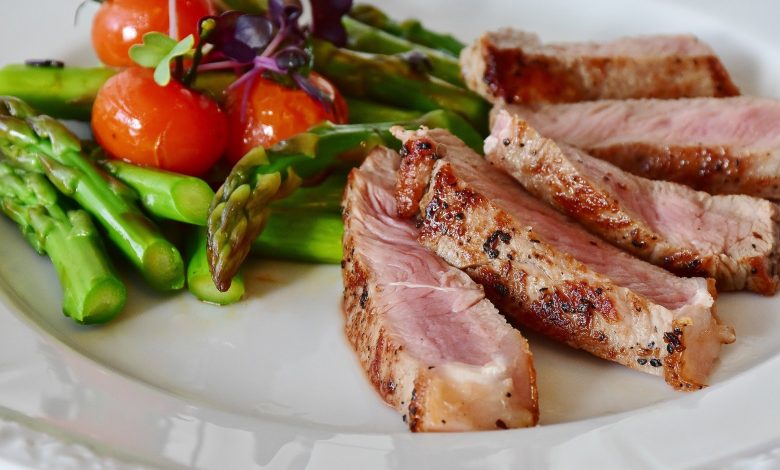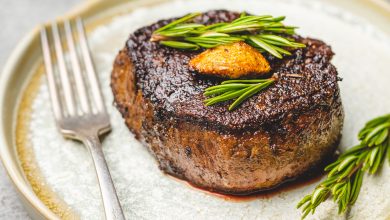
Why Paleo Diets aren’t Designed for Modern Day Humans
If you have been trying to find an effective weight loss strategy, talking to friends and acquaintances about it, there is a good chance that at least one of them has already suggested a Paleo diet to you. It is quite a common thing today to find people adopting this diet plan and proudly showing off their trimmer waistlines.
While a Paleo diet may have some weight-loss benefits, is it as good for you as you may be led to believe? There are contrarian opinions about that, but first, let’s understand what it means exactly to go on this diet.

A quick intro to the Paleo diet
As the name suggests, when you adopt this diet plan, you are going ‘back to the basics’ in a way. That is, you are trying to mimic the dietary habits of prehistoric man. The diet takes its name from the Paleolithic era, and it is also called the caveman diet with good reason, for the Paleolithic man was a hunter-gatherer who lived in caves. For this reason, the Paleo diet is also known as the stone age diet or hunter-gatherer diet as well.
During this pre-historic era, the Paleolithic man ate whatever was available, which meant foods that he could hunt down and fruits and vegetables that he could forage for and gather. It was much later that man learned agriculture, and then edibles like legumes and grains became part of the diet. When man learned to domesticate animals, dairy products got added to the diet choices. A Paleo diet excludes all of these and includes only those foods that our prehistoric, stone age ancestors had access to.
Here’s a look at the major foods you can eat in a paleo diet:
- Fruits
- Vegetables
- Seeds
- Nuts
- Fish
- Lean meat
- Oils that are derived from nuts or fruits
The basic idea behind the Paleo diet is to go back to dietary habits that humankind had in pre-historic times because the proponents believe that the human body is genetically attuned to those foods. According to Paleo diet supporters, the current diet we follow is not right for the human body, which has failed to adapt to the new additions to the dietary range that came in, thanks to the development of agricultural practices. The belief is that this mismatch between what our body is genetically ‘built’ to eat and what we do ingest is a primary cause for the many ailments that are rampant today. Paleo diet followers believe that by following this diet plan, they can keep the risk of complaints like heart problems, diabetes, and obesity at bay.
What one needs to understand is that, with this diet, it is important to include the foods that are locally sourced, because that is what our ancestors did – they ate what they could get from their surroundings. So you would ideally be eating fresh foods that are produced/available in your location and not going for foods that come in from distant areas, perhaps from across the country or from another country.
The million-dollar question now is this: “Does the Paleo diet really suit us better than our current dietary habits? Does it deliver the health benefits that many claim it does?”
The news is not good! An article published in the European Journal of Nutrition showed how study subjects on the Paleo diet presented a heightened percentage of a compound known as trimethylamine N-oxide in the blood that is associated with heart disease. According to a Medical News Today article, the benefits of a Paleo diet are NOT backed by scientific studies, while another report says that a few weeks of the diet can increase your risk of heart trouble. To put it all together, it does seem that a Paleo diet is not quite what our bodies need or can handle.
The most basic issue with the Paleo diet and its underlying belief
The most important argument that Paleo proponents put forth is that our current-day diet does not match what we used to eat in the bygone age, and this mismatch between what we should be eating/what our body is designed to eat and what we ARE eating is the cause of ailments. However, paleontologists point out that it is virtually impossible to say with accuracy what the ancient Paleoliths ate. The fact is, they ate whatever was available to them. That means a stone-age man living near a water body would have eaten more fish since it was more easily accessible. But at the same point in time, a stone-age man living deeper within landmasses may have had a no-fish diet and a diet more focused on meat since he could hunt animals but not have access to marine creatures.
Similarly, what was available to him from plants would vary greatly based on where he lived, what kind of climate prevailed there, and many other factors. In short, there is no way to say exactly which components of the Paleo man’s diet favored his health and were ideal for his constitution.
Also, a much more significant point is that, if the diet we eat is not like the diet the stone age people used to eat, our physiology, our body itself, is not the same as that of the stone age man either. It is not just human habits that evolved to include agriculture, food processing, and so on, but also the human body and nature itself that evolved as well. So resetting back to a diet plan before the natural evolution took its course, but with bodies that did evolve slowly (even at a slower pace), is just creating another mismatch.

How do we know that the stone age diet had more meat?
The second argument that shows why a Paleo diet may not be suitable at all is this – in general, there is a notion that this ancient diet consisted mainly of meat. In fact, archaeological evidence supports this belief that meat formed a big part of the diet for pre-historic man. However, what we need to understand is that the evidence archaeologists have found at specific sites is the basis of this belief – they have found the bones of wild animals that point to the fact that the animals were killed for meat.
This does not, however, prove that veggies/plant products were not a significant part of the diet then. Plant products degenerate quicker and do not survive as long as animal remains do (such as bones). So evidence that the diet consisted of plant products may just have been obliterated by time. In north Israel, at a site that is believed to have been inhabited some 780,000 years ago, the presence of water has preserved the surrounding. From here, archaeologists have discovered that the diet consisted of both plant and animal-derived foods.
The belief now, based on studies, is that stone age man had a varied diet- drawing from both plant and animal sources for his food. Over 55 kinds of plants were part of the normal diet. Another fact that underlines why plants must have played a key role in the stone age diet is that humans need specific plant-based nutrients to survive. The very fact that the stone age man survived proves that plants were a key part of the diet. Now, what this shows is that the understanding we have of the Paleo diet may be inaccurate, and so the whole belief that following the same diet will make for better health loses its veracity.
Why low-carb is not a great idea, after all
Apart from the high-on-meat, low-on-plant-based foods strategy that the typical Paleo diet recommends, there is also a restriction on carbs. Paleo proponents believe that the stone age man avoided carbs diligently, and so must we. However, this may not be true at all. A study by the University of Chicago shows that the presence of carbs is essential for the brain growth that we have seen over the past three million years. We certainly cannot deny that mental development and evolution has taken place at a fast clip since the stone age, can we? If this cannot be denied, then neither can we deny that the nutrients that propelled this development must have been present in the food consumed over the decades as well.
The fact is that our brain uses up about a quarter of the total energy our body can create for its own functioning. If the stone age man had avoided carbs entirely, he simply could not have functioned. Also, even more tellingly, studies show that it was in the middle of the Paleolithic era that some specific genes evolved, those genes that prompt the enzyme creation for starch digestion. If the Paleolithic man had not been introduced to carbs in his diet at all, why would the body evolve in this direction? In short, the stone age man was in the habit of consuming starch-rich foods derived from plants, and he was not predominantly a meat eater, as Paleo diet aficionados may believe. So opting for a meat-rich diet to the exclusion of other food types or restriction of other food types may not be a smart move at all.

Our body is NOT ‘designed’ for this diet
This argument is perhaps the most damning of them all because the most basic assumption of the Paleo diet is that the human body has not been designed for the modern-day diet that we eat. Paleo followers believe that this is the reason why the diet we consume today is so unsuitable for us and also the reason for the many ailments we see rampant today.
However, just take a look at the human body and compare it with that of forest creatures, and we can make some startlingly interesting observations. Remember that the Paleo diet follows a high-on-meat, low-on-plant-produce philosophy, so if you were following this, you would be eating more meat. Also, a Paleo diet is based on the assumption that the stone age man depended heavily on his hunting and gathering skills for his food, more hunting than gathering, so the majority of his diet would consist of animals he had hunted. So if we were to follow a similar diet, and the argument is that our bodies are designed for THIS diet, we would need to have the right ‘tools’ built in our bodies to handle this food, right? Let’s see if we do.
Carnivores have sharp, pointed, canine teeth that help tear flesh. Do we? No! What we have are small ‘canine’ teeth that are no good for tearing flesh at all. Do we have claws that we need to hold and tear the flesh? No again. Our fingernails are too short to do anything of the sort, and they are too soft as well.
Can we swallow flesh whole in chunks? No, but carnivores can, with their jaws moving up and down to accommodate large chunks of flesh going into their mouths. In herbivores and humans, you find that the jaw movement is not just up and down, but also from side to side. That’s because we are accustomed to eating plant foods that need to be ground well in the mouth before they are swallowed.
We have flat molars at the back that essentially do a pestle and mortar action to grind out fibrous foods. If you put this all together, you can see that humans do not seem to be designed for eating a diet that is mainly meat-intense at all. We just don’t have the ‘tools’ for it!
Let’s take a quick look inside the human body- specifically at the salivary amylase genes. These genes are responsible for promoting the production of salivary enzymes that we need for digesting starch in the food. Humans have six copies of these genes, while primates have just two. The increase in the number of these genes in humans took place sometime in the past million years. This is clear evidence that, unlike the proponents of the Paleo diet believe, our body was not just designed entirely for a meat-based diet at the stone age, but that it has also been evolving since to adapt to changing food habits.
Then, we move on to the actual digestive process, where the food is broken down in the stomach. To break down meat, you need strong stomach acid, which carnivores do have. They can swallow the meat in large chunks and just leave it to the powerful stomach acid to break it down, as well as destroy the harmful bacteria in the flesh. In contrast, humans have very weak stomach acid that is quite adequate to break down a predominantly plant-based food choice easily, especially since it would be ground up nicely with our chewing action. But when it comes to meat, we take much longer to digest it.
Another important part of the digestive system is the intestine. In animals, you find short intestines and colons. The meat gets through quickly well before it can begin to rot. But in humans, this is not the case. The human intestinal tract is so long that by the time meat passes through it fully, it has begun to rot. The bacteria in the meat have plenty of time to grow and flourish as well, thus putting us at a higher risk of ailments arising from them. The long intestines are ideal for plant-based foods because then there is adequate time for all the nutrients to be broken down efficiently and absorbed by the time the food passes out. Simply put, meat rots in the human intestine, whereas plant foods don’t, and the nutrients are more efficiently absorbed from the latter. It is quite clear our intestines seem designed for plant-based rather than animal-based foods.
Want to be brainy? Then don’t go zero-starch!
The brain development that took place in the Paleolithic period could not have been achieved only with a meat-only, zero-carbs diet. Studies have proven that beyond doubt. This tells us that adopting a modern-day Paleo diet that eliminates all grains would be a really bad idea. We are not very sure exactly what the Paleo man ate to get his starch, but we do know that we need to get it from grains like rye, oats, corns, quinoa, wheat, or millet, and also from starchy root vegetables. Since these are all out of a modern-day Paleo diet, this diet cannot possibly be a good thing for your body.
In short, all the evidence points to the fact that the human body was indeed designed in the Paleolithic age and has adapted since to a predominantly plant-based diet with adequate starch content. So switching out to a meat-intensive one with zero grains and zero starch is likely to be quite detrimental to your overall health!



